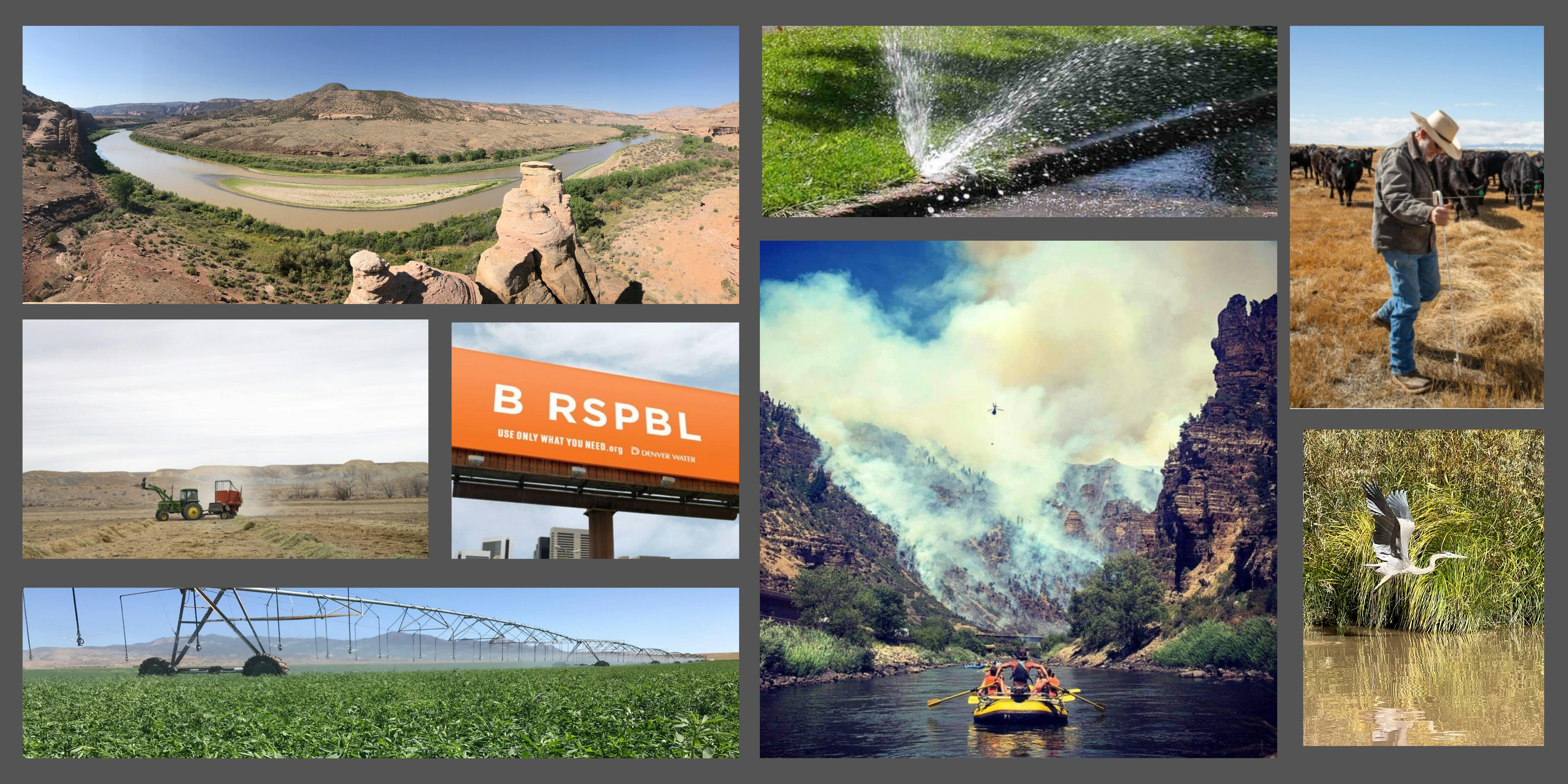Farming and Ranching Drought Vignette
It’s early in the season (May/June) and you are operating a cow-calf operation on the Western Slope. Most years, you irrigate around 400 acres of grass hay and often you producing 2 tons per acre, which is on the high end of yield and pretty good. You also have around 400 head of cattle.
Beginning in May, those cattle spend about half the year on BLM property grazing. During that time, you are irrigation and haying the fields. You bring the cattle back in the fall, and in most years, the cattle are able to forage on the regrowth in the hayfields and you don’t have to touch any of the bales of hay you harvested until early next year. A single cow eats about 25 lbs (this can depend on the forage, if the cow is pregnant, etc) a day, so 80 cows can go through 1 ton of hay daily. You have 400 cows, so when you are feeding them hay, that’s 5 tons a day. But in an average year, you are producing anywhere near 800 tons of hay. This means you usually have more forage than you need and have been able to stockpile hay the past few years.
It’s early 2021 and 2020 was already brutal. Cattle prices dropped to the point that many of your cattle are barely even breaking even at auction. It’s May and all indicators are showing that runoff and water availability throughout the summer are going to be less than you have seen in years. The forage on the BLM property your cattle graze is 20-30% less than usual. Due to the dry conditions of 2020, you have already used most of the hay stockpiled the past few years. With what hay you have left, you will likely need during this summer to supplement what forage the cattle can eat. It is very likely you will not be producing anywhere near the amount of forage you will need to feed your current herd size.
As early as July, you sell of about 50 head of cattle. These are mainly cows that have some minor issue or haven’t been producing as well as the other cattle. With the current price of cattle, the money you make is just around break even the cost to produce the cattle. You spend the summer having to move cattle on BLM property. Ponds that normally provide drinking water for cattle have dried up and you don’t want cattle to overgraze what forage exists. You are spending a lot of the summer on horseback moving cows. Sometimes you are even feeding hay, the last of what you have stored up over the years. Every bale of hay you are feeding cattle right now is lost money. That is hay you need for next year.
Irrigation and growth in the hay meadows isn’t growing much better. Some fields are getting very little water and the ground is just so dry. By the time you are done with harvest, you have about 400 tons of hay. Per acre, you only yielded about 1.5 ton and quite a few of your fields didn’t produce much of anything because you couldn’t even get water to them. From surveying the soil and your fields, there is virtually no subsoil moisture, so it is likely there will be very little regrowth for cattle to graze this fall. You will have to feed them hay directly again. More labor and less return.
It’s late summer 2021, you have a herd of 350 cattle now after culling some cattle earlier in the year. Since everyone has been culling cattle the past two years and herd sizes have been decreasing the price of cattle has increased a bit and will likely increase next year. You aren’t losing money anymore, and will be covering your costs, and making some profit. However, you really only have enough forage to feed your current herd size for 90 – 100 days.
You will not be harvesting any more hay for almost a year from now. Right now, you either buy hay or continue to destock your herd, or both. In most places on the Western Slope. Hay is running $250 - $275 a ton. If you want to bring hay from Eastern Colorado, shipping fees are an additional $100 per ton. It will cost you at least $1,000 a day to feed your herd. You are not sure what the snowpack and water availability will be next year. You don’t know if hay production will bounce back. It could. However, you know also know that it will take several years to build your heard back to size. Even if prices increase, your profit will be less for several years than the profit you were making before the drought.
What do you do?




Thank you for your contribution!
Help us reach out to more people in the community
Share this with family and friends